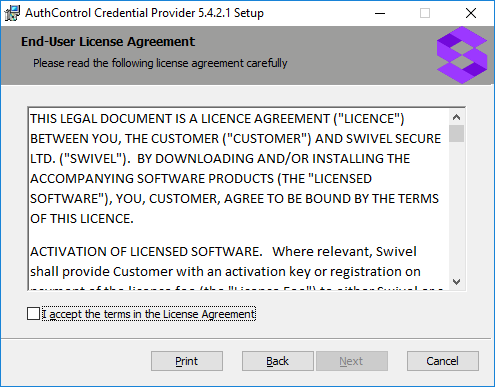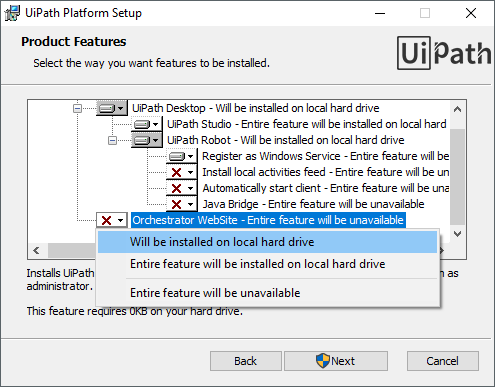2020. 1. 23. 02:53ㆍ카테고리 없음

Short answer: you can't. Use MSIEXEC /xLong answer: When you run the MSI file directly at the command line, all that's happening is that it runs MSIEXEC for you. This association is stored in the registry. You can see a list of associations by (in Windows Explorer) going to Tools / Folder Options / File Types.For example, you can run a.DOC file from the command line, and WordPad or WinWord will open it for you.If you look in the registry under HKEYCLASSESROOT.msi, you'll see that.MSI files are associated with the ProgID 'Msi.Package'. If you look in HKEYCLASSESROOTMsi.PackageshellOpencommand, you'll see the command line that Windows actually uses when you 'run' a.MSI file.
Not sure I agree with 's 'you can't'. On my WinXP install, HKEYCLASSESROOTMsi.PackageshellOpencommand contains '%SystemRoot%System32msiexec.exe' /i '%1'%. Seems if one is willing to have to specify /i to install in cmd.exe, where they could have (by default) just specified the MSI filename; then they could change that registry value to '%SystemRoot%System32msiexec.exe' '%1'%. to allow the specifying of the /x switch in cmd.exe, and right click the MSI to access (at least) the install option in the GUI.–Aug 1 '13 at 19:23.
Msi Installer Error 1001
NoteMsiexec also sets an error level on return that corresponds to.The following table identifies the standard command-line options for this program. Command-line options are case insensitive.Windows Installer 2.0: The command-line options that are identified in this topic are available beginning with Windows Installer 3.0. The Windows Installer are available with Windows Installer 3.0 and earlier versions. OptionParametersMeaning/helpHelp and quick reference option. Displays the correct usage of the setup command including a list of all switches and behavior.
The description of usage can be displayed in the user interface. Incorrect use of any option invokes this help option.Example: msiexec /help!NoteThe equivalent Windows Installer is /?/quietQuiet display option. The installer runs an installation without displaying a user interface. No prompts, messages, or dialog boxes are displayed to the user. The user cannot cancel the installation. Use the /norestart or /forcerestart standard command-line options to control reboots. If no reboot options are specified, the installer restarts the computer whenever necessary without displaying any prompt or warning to the user.Examples:msiexec /package Application.msi /quietMsiexec /uninstall Application.msi /quietMsiexec /update msipatch.msp /quietMsiexec /uninstall msipatch.msp /package Application.msi / quiet!NoteThe equivalent Windows Installer is /qn./passivePassive display option.

To see MSI command-line usage, you can open a command prompt on the View component computer and type msiexec /? To run a View component installer silently, you begin by disabling the bootstrap program that extracts the installer into a temporary directory and starts an interactive installation. At the command line, you must enter command-line options that control the installer's bootstrap program. Uninstalling an InstallScript MSI Install from the Command Line. But, to uninstall silently, you have to use a response file. That makes this process a bit of a pain, but still doable. You can either create the response file manually from the command line. Or you can create a response file on the fly, from the script. After all, a response file is just a text file with the right information in it.
The installer displays a progress bar to the user that indicates that an installation is in progress but no prompts or error messages are displayed to the user. The user cannot cancel the installation. Use the /norestart or /forcerestart standard command-line options to control reboots. If no reboot option is specified, the installer restarts the computer whenever necessary without displaying any prompt or warning to the user.Example: msiexec /package Application.msi /passive!NoteThe equivalent Windows Installer is /qb!- with =S set on the command line./norestartNever restart option. The installer never restarts the computer after the installation.Example: msiexec /package Application.msi /norestart!NoteThe equivalent Windows Installer command line has =ReallySuppress set on the command line./forcerestartAlways restart option.

The installer always restarts the computer after every installation.Example: msiexec /package Application.msi /forcerestart!NoteThe equivalent Windows Installer command line has =Force set on the command line./promptrestartPrompt before restarting option. Displays a message that a restart is required to complete the installation and asks the user whether to restart the system now. This option cannot be used together with the /quiet option.!NoteThe equivalent Windows Installer command line has = ' set on the command line./uninstallUninstall product option. Uninstalls a product.!NoteThe equivalent Windows Installer is /x./uninstall/package /uninstall ;Update2.msp PatchGUID2Uninstall update option.
Uninstalls an update patch.!NoteThe equivalent Windows Installer is /I with =Update1.msp PatchGUID1;Update2.msp PatchGUID2 set on the command line./logLog option. Writes logging information into a log file at the specified existing path. The path to the log file location must already exist. The installer does not create the directory structure for the logfile.The following information is entered into the log:. Status messages. Nonfatal warnings. All error messages.
Start up of actions. Action-specific records. User requests. Initial UI parameters. Out-of-memory or fatal exit information. Out-of-disk-space messages. Terminal properties!NoteThe equivalent Windows Installer is /L.!NoteFor more information about all the methods that are available for setting the logging mode, see in the section./packageInstall product option.
Installs or configures a product.!NoteThe equivalent Windows Installer is /I./update;Update2.mspInstall patches option. Installs one or multiple patches.!NoteThe equivalent Windows Installer command line has = msipatch.msp set on the command line.
